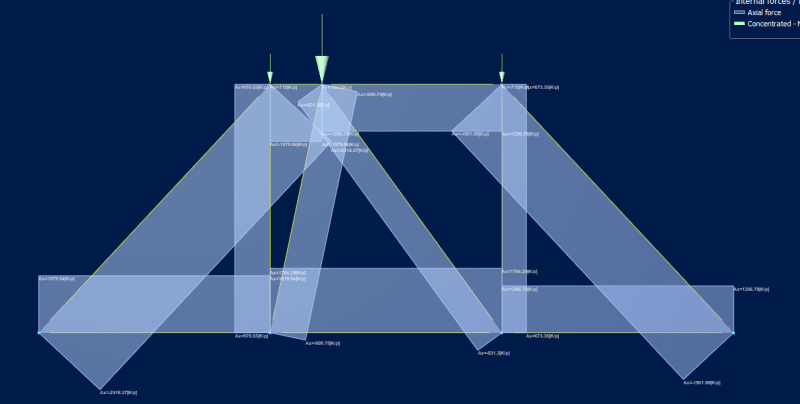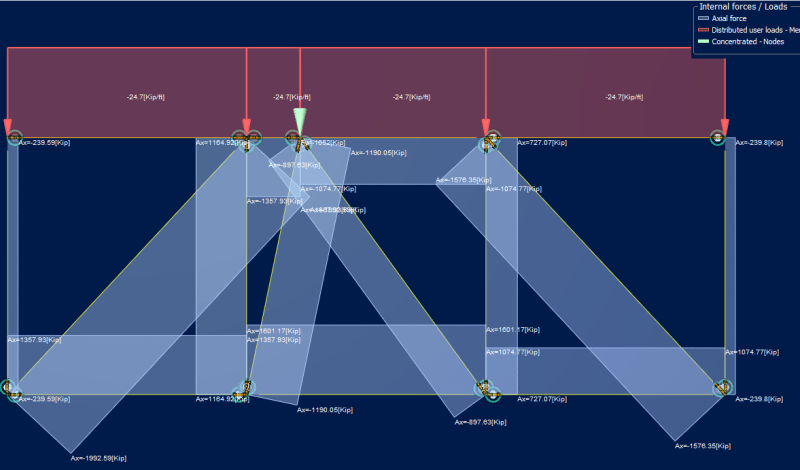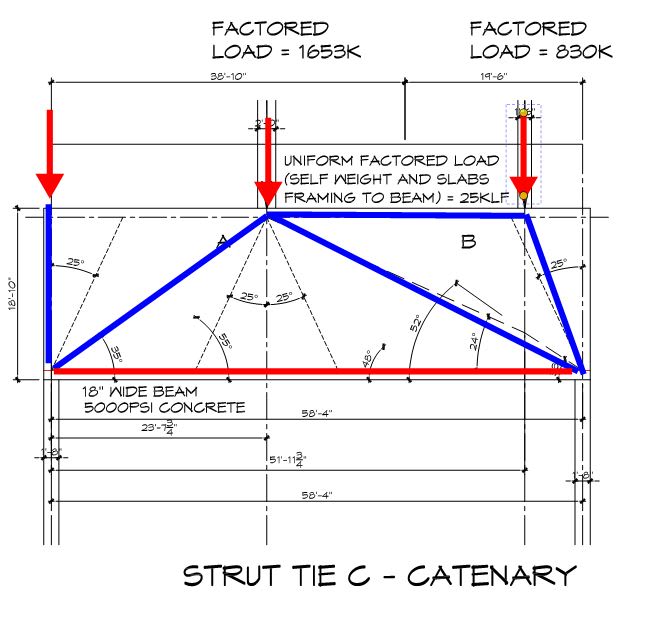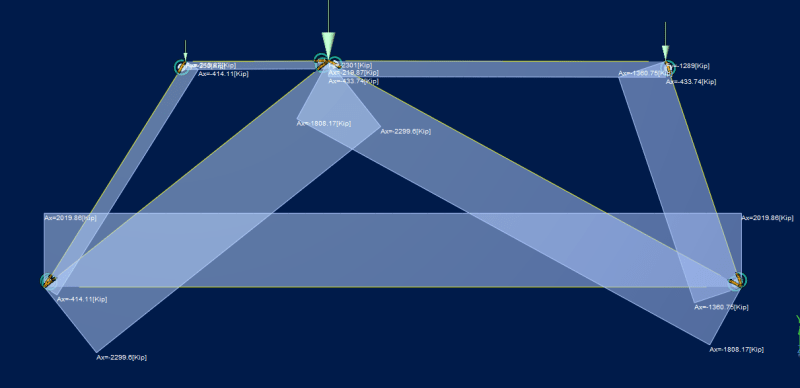Hello again,
I think we have some experts on this thread so I really hope someone can help me. Please refer to the attached sketch.
I am having difficulty trying to design a deep beam. there are two transfer loads. one toward center span and one close to the beam end.
For my strut tie model A&B I am concerned because I have a theoretical tie below the point load, which also lies within 25deg from vertical (compression strut in a tie zone?)
For model C I am trying a catenary style layout, similar to "direct strut models" for symmetrically loaded deep beams like many examples. however one point is quite lower than the other and the struts are becoming shallow in their angle relative to horizontal. not sure if this is working.
for model D I am trying to simplify by saying tie the load near the support at the top and bring the strut down to the support. then treat the near-mid span load as a regular strut tie model. Again, does this make sense?
to note: supporting columns have already been poured and I believe i am having problems with the stresses at nodes and struts in general, what can i do besides increased the psi of the concrete?
I am not an expert on this subject matter so all advice is welcomed!!
I think we have some experts on this thread so I really hope someone can help me. Please refer to the attached sketch.
I am having difficulty trying to design a deep beam. there are two transfer loads. one toward center span and one close to the beam end.
For my strut tie model A&B I am concerned because I have a theoretical tie below the point load, which also lies within 25deg from vertical (compression strut in a tie zone?)
For model C I am trying a catenary style layout, similar to "direct strut models" for symmetrically loaded deep beams like many examples. however one point is quite lower than the other and the struts are becoming shallow in their angle relative to horizontal. not sure if this is working.
for model D I am trying to simplify by saying tie the load near the support at the top and bring the strut down to the support. then treat the near-mid span load as a regular strut tie model. Again, does this make sense?
to note: supporting columns have already been poured and I believe i am having problems with the stresses at nodes and struts in general, what can i do besides increased the psi of the concrete?
I am not an expert on this subject matter so all advice is welcomed!!






![[bigsmile] [bigsmile] [bigsmile]](/data/assets/smilies/bigsmile.gif)